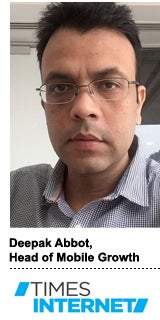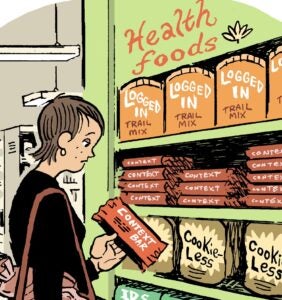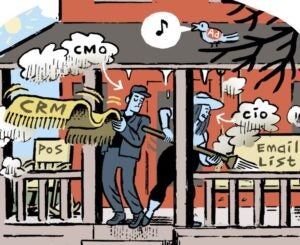 Advertisers in India have become addicted to cheap clicks.
Advertisers in India have become addicted to cheap clicks.
“But it shouldn’t just about installs. It should be someone actually converting inside an app,” said Deepak Abbot, head of mobile growth at Times Internet, the digital product arm of Indian media titan Times India Group.
Times Internet houses a host of apps that run the gamut from entertainment to news to utility. Gaana is a streaming music app for Bollywood songs. The Times of India is its flagship news app. FILMIPOP aggregates movie trailers, reviews and local showtimes.
Those apps generate a good amount of app install inventory that goes at a premium because Times Internet is careful about quality and offers contextual targeting for users who are likely to buy.
But there still isn’t enough inventory to go around, and it’s leading many app developer advertisers to spend with questionable publishers to satisfy their appetite for growth, even though incentivized installs rarely result in MAUs.
India is sixth on the list of countries with the highest rates of click fraud, according to mobile attribution company Apsalar, coming in behind Hong Kong, Netherlands, Kuwait, Bahrain and Malaysia.
“Right now, advertisers feel OK because they want to show growth, which they’re getting easily with false clicks,” Abbot said. “But insiders know that these clicks are definitely not the right clicks, and it’s genuinely affecting advertisers looking for a real return on investment.”
Before joining Times Internet in October 2014, Abbot spent nearly two years as head of product marketing at Indian mobile payments company Paytm.
AdExchanger spoke with Abbot about why India is proving to be fertile ground for fraudsters.
AdExchanger: You’re in charge of mobile growth for 18 different apps. That’s a lot of apps.
DEEPAK ABBOT: We actually have almost 40 apps, but 18 are the most prominent. Overall, we have between 50 [million] and 60 million active installs and 7 million daily active users, which makes us one of the biggest publishers in India after Facebook and Google.
My job is to make sure we get new users, increase retention and increase conversions. It’s a cross between product, marketing and business.
What can advertisers buy?
We don’t sell performance-based ads, at least on mobile. We do a lot of brand ads and CPM-based sales.
We sometimes find it difficult to convince some companies to do business with us because they’re used to cheap clicks, but ad networks and small-time publishers can do that because they’re often offering stolen content like illegal music as an incentive. The prices are low, but they generally provide poor-quality users.
How big of a problem is incentivized traffic?
Most of the big guys are able to detect completely fictitious clicks. That’s becoming much easier. The bigger evil right now is creating false campaigns with incentives that don’t exist. It’s impossible to compete with.
Take Flipkart as a hypothetical example. Flipkart runs a campaign with a network and the network in turn works with certain publishers. Flipkart doesn’t know it, but the publishers create fake incentives to get users to download the Flipkart app, things like vouchers for illegal MP3s. They’re able to generate a lot of clicks that way, but they’re not able to generate quality installs.
What other types of fraud are you seeing?
In India, there are a lot of publishers pushing cheap clicks by forcing APK downloads [stolen Android code harboring malware], and that also results in a bad-quality user. It’s becoming the single biggest reason for bringing in low-quality users.
We’ve also noticed that some publishers will take a piece of creative they’re given, a banner, for example, and change it without the advertiser’s knowledge to include an objectionable image, like an image of a nude girl, in order to tempt more clicks. Take the Times of India News app. We’re a reputable newspaper, but I’ve seen a lot of banners using porn images to generate clicks. It’s difficult to find these kinds of things when you have random publishers running your ads unless you’re very actively looking.
False clicks have always been there, but the fraud is more rampant now because there is so much money in the market and because a lot of advertisers have loose controls.
How much is being spent?
By my rough estimation, the top five Internet companies in India, including ecommerce companies, have spent close to $100 million on online marketing this year. It’s a huge amount considering the size of the India market.
Everyone’s in land-grab mode. They want more traffic and they want more transactions and it’s making them less strict about click fraud. There is a lot of VC money flowing in focused on growth, and in India, growth means more and more users. No other metrics apply.
When will there be a wake-up call?
Talk to any of the heads of digital marketing at almost any of the leading Internet companies and they’ll say they’re seeing poor-quality users, low conversions and high uninstall rates. They’re worried. But they’re only going to really start taking this on when it hits their balance sheet and advertisers start to withhold their spend because the low-quality users aren’t creating value.
There will come a time within the next six months to a year when they’ll start hurting, but I don’t see that happening in the immediate short term. Right now they’re sitting on millions of users, so it’s not showing up. But there will come a point when they won’t be able to justify the numbers.
How are you handing these issues internally?
We’re a publisher, but we’re also an advertiser, so we spend a lot of money to acquire users. We invest in tools to understand who our users are and where they come from, and we have a small internal team that examines the quality of users coming in through particular networks. How are they converting? Are they real human beings? What is their retention rate?
We don’t have a lot of people who can do this yet, but we’re slowly building up this skill set. It’s hard to find people who understand the entire value chain.














